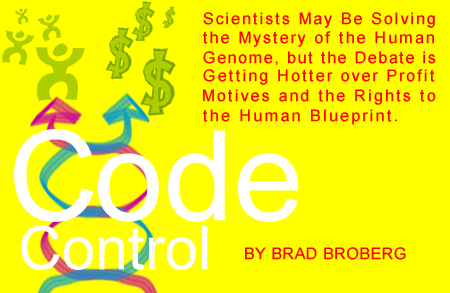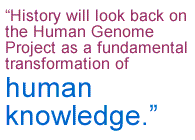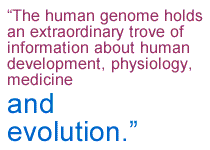
The details make you dizzy. The terminology turns you numb.
But when the average person looks at the big picture, the Human Genome Project meets an important rule of thumb for good science, says Maynard Olson, director of the University of Washington Human Genome Center.
"If you can't explain the research you're doing to your next door neighbor, it should give you pause," he says. "The Human Genome Project was never that difficult to explain."
After more than a decade of data collection and number crunching, the Human Genome Project has produced the molecular blueprint of a human being. By identifying 30,000 to 35,000 distinct genes embedded within the long chemical sequence that forms human DNA, an international army of scientists—including Olson and others from the UW—have captured the code of life.
Their report—published last February in Nature magazine—launched skyrockets. And why not? "The human genome holds an extraordinary trove of information about human development, physiology, medicine and evolution," reads the report's introduction.

Some compare the genome to a window on the essence of what it means to be human. Through it people hope to see fantastic advances unfold—a cure for cancer, an antidote for aging, a test for the risk of heart disease and other ills—all made possible by understanding the molecular machinery that drives our bodies.
"It caught the public's imagination," says Olson, "because they can grasp what it's all about."
Or can they?
While the basic biology and the potential payoffs behind compiling a complete tally of human genes—otherwise known as a genome—may have penetrated the Zeitgeist of the new millennium, many of the subplots surrounding this scientific milestone probably have not.
Chief is a rivalry between public and private scientists chasing the same prize: the honor, satisfaction and opportunities—altruistic as well as economic—dangled by cataloging the human genome.
At stake, according to some, is the future of science. Will it be increasingly controlled—and perhaps manipulated—by private corporations that hoard their data to maximize profits? Or will it remain essentially a public endeavor in which research is shared, scrutinized and built upon by all?

The Human Genome Project refers to the work of the International Human Genome Sequencing Consortium. Formed in 1990, the coalition consists of 20 groups—including the UW Genome Center—from the U.S., the United Kingdom, France, Germany, Japan and China.
Funded mostly by the U.S. National Institutes of Health (NIH) and the Wellcome Trust of London, the consortium set its own pace and planned to finish assembling the human genome in 2003.
But that was before the commercial potential of possessing the human genome—and selling research data and patenting genes—drew private enterprise into the quest. In 1998, Celera Genomics Group announced it would launch a competing project—and finish three years sooner.
- Private Company Makes Waves in Genomic Research
- Filling the Holes in Draft Genome
- UW Focus is on Technology Development
- Sidebar: Biological Revolution or Misguided Priority?
- Return to September 2001 Table of Contents